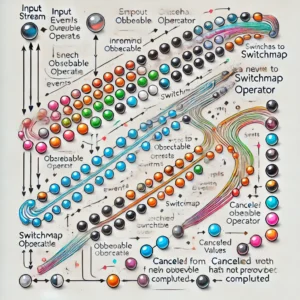Effective Version Control with Git and GitHub is a crucial aspect of software development that ensures the smooth collaboration of teams, the ability to revert to previous versions of code, and the efficient management of code changes. Git is a distributed version control system that is widely used by developers to track changes made to files over time. It allows developers to make a copy of a file, make changes to that copy, and then merge these changes to the original copy.
GitHub, on the other hand, is a web-based hosting service for Git repositories. It provides developers with a platform to store and share their code with others, collaborate with team members, and manage code changes. With GitHub, developers can easily create and manage repositories, track issues, and perform code reviews.
By mastering Git and GitHub, developers can streamline their workflow, improve collaboration, and reduce the risk of errors and conflicts. In this article, I will provide an overview of effective version control with Git and GitHub, including the benefits of using these tools, how to set up a repository, how to make changes to code, and how to collaborate with others.
Understanding Version Control
Version control is the practice of tracking changes to a set of files over time. It is an essential tool for software development teams to manage code changes, collaborate effectively, and maintain code quality. With version control, developers can work on different versions of the same codebase simultaneously and merge changes back together seamlessly.
There are two main types of version control systems: centralized and distributed. In a centralized system, a single server stores the codebase, and developers check out and check in changes to that server. In contrast, a distributed system, like Git, allows each developer to have their own copy of the codebase, making it easier to work offline and collaborate with others.
Git is a popular distributed version control system that is widely used in the software development industry. It allows developers to track changes to a set of files and collaborate with others seamlessly. With Git, developers can create branches to work on new features or bug fixes, merge changes back into the main codebase, and revert to previous versions of the code if necessary.
GitHub is a web-based platform that provides hosting for Git repositories. It allows developers to store their codebase in the cloud, collaborate with others, and track issues and bugs. GitHub also provides a range of tools for code review, continuous integration, and deployment, making it an essential tool for software development teams.
In summary, version control is an essential tool for software development teams to manage code changes, collaborate effectively, and maintain code quality. Git is a popular distributed version control system that allows developers to track changes to a set of files and collaborate with others seamlessly. GitHub is a web-based platform that provides hosting for Git repositories and a range of tools for code review, continuous integration, and deployment.
Basics of Git
Git is a distributed version control system that allows developers to track changes to their codebase over time. It provides a way to keep a history of all changes made to a project, making it easy to collaborate with others and maintain a record of progress.
Git Workflow
Git uses a simple workflow that involves three main stages: working directory, staging area, and repository.
- Working directory: This is where you create, modify, and delete files in your project.
- Staging area: This is where you prepare changes to be committed to the repository.
- Repository: This is where all changes are permanently stored, and you can access previous versions of your code.
Git Commands
Git provides a wide range of commands that you can use to manage your codebase. Here are some of the most common ones:
git init: Initializes a new Git repository in your project directory.git add: Adds changes to the staging area.git commit: Saves changes to the repository with a commit message.git status: Shows the status of your working directory and staging area.git log: Shows the commit history of your repository.
Git Branches
Git allows you to create branches, which are separate lines of development that can be merged back into the main codebase. This is useful for working on new features or fixing bugs without affecting the main codebase.
git branch: Lists all branches in your repository.git checkout: Switches to a different branch.git merge: Merges changes from one branch into another.
Git Remote
Git also allows you to work with remote repositories, which are hosted on a server and can be accessed by multiple developers. This is useful for collaborating with others and sharing code.
git clone: Copies a remote repository to your local machine.git push: Uploads changes to a remote repository.git pull: Downloads changes from a remote repository.
In summary, Git is a powerful tool for version control that provides a simple workflow, a wide range of commands, and the ability to work with branches and remote repositories. To learn more about various other Git commands and their usage please visit Git site.
Setting Up Git
To start using Git for version control, you need to set it up on your computer. Here are the steps to do that:
- Install Git: You can download the appropriate installer for your operating system from the official Git website. Follow the installation instructions to get Git set up on your machine.
- Configure Git: After installing Git, you need to configure it with your name and email address. Open a terminal or command prompt and use the following commands:
$ git config --global user.name "Your Name"
$ git config --global user.email "youremail@example.com"
- Verify Git Installation: To verify that Git is installed and configured correctly, run the following command in your terminal or command prompt:
$ git --version
This should display the version of Git you have installed.
- Set Up SSH Key: If you plan to use Git with GitHub, it’s recommended to set up an SSH key. This will allow you to securely authenticate with GitHub without having to enter your username and password every time you push or pull code. Here are the steps to set up an SSH key:
- Generate an SSH key pair using the following command in your terminal or command prompt:
$ ssh-keygen -t rsa -b 4096 -C "youremail@example.com"
- Add your SSH key to the ssh-agent using the following command:
$ eval "$(ssh-agent -s)"
$ ssh-add ~/.ssh/id_rsa
- Copy your SSH key to the clipboard using the following command:
$ pbcopy < ~/.ssh/id_rsa.pub
- Add the SSH key to your GitHub account by following the instructions in this article.
With these steps, you should have Git set up and ready to use for version control.
Committing Changes in Git
Staging Changes
Before committing changes in Git, it’s important to stage the changes first. Staging changes means selecting which changes to include in the next commit. This allows for more control over the changes that are being committed.
To stage changes in Git, use the git add command followed by the file or directory name. For example, to stage a single file named index.html, use the command:
git add index.html
To stage all changes in a directory, use the command:
git add .
It’s also possible to stage only parts of a file using the git add -p command. This allows for more granular control over the changes being committed.
Committing Changes
After staging changes, the next step is to commit them. Committing changes in Git means creating a snapshot of the changes that have been staged. Each commit should have a meaningful message that describes the changes being made.
To commit changes in Git, use the git commit command followed by the -m flag and the commit message. For example:
git commit -m "Added new feature to homepage"
It’s important to commit changes frequently and with meaningful messages. This makes it easier to track changes and understand the history of the project.
In addition to the -m flag, there are other options that can be used with the git commit command. For example, the --amend option can be used to modify the most recent commit. The --no-edit option can be used to skip the commit message prompt if the message is not being changed.
Overall, committing changes in Git is an essential part of effective version control. By staging changes and committing them frequently with meaningful messages, it’s easier to track changes and collaborate with others on a project.
Branching and Merging in Git
As a version control system, Git allows developers to create and manage branches to work on different versions of their codebase. Branching helps in keeping the main branch clean and stable while developers can work on new features or bug fixes in separate branches. Once the changes are tested and ready, they can be merged back into the main branch.
Creating Branches
To create a new branch in Git, we use the git branch command followed by the branch name. For example, to create a new branch named feature-branch, we run the following command:
git branch feature-branch
To switch to the new branch, we use the git checkout command followed by the branch name:
git checkout feature-branch
Alternatively, we can create and switch to the new branch in a single command using git checkout with the -b option:
git checkout -b feature-branch
Merging Branches
Once we have made changes in a separate branch, we can merge them back into the main branch. To merge a branch, we first switch to the main branch using git checkout and then run the git merge command followed by the branch name to merge. For example, to merge changes from feature-branch into the main branch, we run the following commands:
git checkout main
git merge feature-branch
Git uses different strategies to merge branches based on the changes made in the branches. The most commonly used strategy is the merge commit strategy where Git creates a new commit to merge the changes from the two branches.
It is important to resolve any conflicts that arise during the merge process. Git will automatically attempt to merge the changes, but if there are conflicts, it will pause the merge process and let the developer resolve the conflicts manually. Once the conflicts are resolved, we can commit the changes and complete the merge process.
In summary, Git’s branching and merging capabilities make it a powerful tool for version control. By creating and managing branches, developers can work on different versions of their codebase without affecting the main branch. Once the changes are tested and ready, they can be merged back into the main branch using Git’s merge capabilities.
Resolving Merge Conflicts
As a developer, it’s common to run into merge conflicts when working with Git and GitHub. Merge conflicts occur when two or more contributors make changes to the same file in different branches, and Git is unable to automatically merge the changes. In this section, I’ll explain how to resolve merge conflicts in Git and GitHub.
Resolving Merge Conflicts in Git
To resolve merge conflicts in Git, you can use the command line or a GUI tool. Here are the steps to resolve merge conflicts using the command line:
- Open Terminal and navigate to the local Git repository that has the merge conflict.
- Type
git statusto see which files have conflicts. - Open the conflicting file(s) in a text editor and locate the merge conflict markers (
<<<<<<<,=======, and>>>>>>>). - Edit the file to resolve the conflicts, removing the markers and keeping the changes you want to keep.
- Save the file and stage it with
git add <file>. - Commit the changes with
git commit.
Resolving Merge Conflicts in GitHub
To resolve merge conflicts in GitHub, you can use the built-in conflict editor. Here are the steps to resolve merge conflicts in GitHub:
- Navigate to the pull request with the merge conflict.
- Click the “Resolve conflicts” button.
- The conflict editor will open, showing the conflicting files and lines.
- Edit the files to resolve the conflicts, using the buttons in the editor to accept or reject changes.
- Once you have resolved all conflicts, click the “Mark as resolved” button.
- Review the changes and click the “Merge pull request” button to merge the changes.
Best Practices for Resolving Merge Conflicts
Here are some best practices to follow when resolving merge conflicts:
- Pull frequently to keep your local repository up-to-date with the remote repository.
- Use descriptive commit messages that explain why the changes were made.
- Resolve conflicts as soon as possible to avoid conflicts becoming more difficult to resolve over time.
- Use a merge tool, such as Beyond Compare or KDiff3, to make resolving conflicts easier.
- Communicate with other contributors to ensure everyone is aware of changes being made and to avoid conflicting changes.
By following these best practices and using the tools available in Git and GitHub, you can effectively resolve merge conflicts and keep your codebase in a stable state.
Introduction to GitHub
GitHub is a web-based platform that is used for version control and collaborative software development. It provides a user-friendly interface for managing Git repositories, which allows developers to work on the same codebase simultaneously.
As a developer, I find GitHub to be an essential tool for managing my projects. It provides a centralized location for my code, making it easy to collaborate with others and keep track of changes over time.
One of the primary benefits of GitHub is its ability to facilitate collaboration. Multiple developers can work on the same project simultaneously, and GitHub makes it easy to merge changes and resolve conflicts. This is especially useful for large projects with many contributors.
GitHub also provides a range of features that make it easier to manage and organize your codebase. For example, you can create issues to track bugs or feature requests, and you can use labels and milestones to categorize and prioritize them.
Another useful feature of GitHub is its integration with other tools and services. For example, you can use GitHub to automatically deploy your code to a hosting service like Heroku or AWS. You can also integrate GitHub with project management tools like Trello or Asana to keep track of tasks and deadlines.
Overall, GitHub is an essential tool for any developer, whether you are working on a personal project or collaborating with a team. Its user-friendly interface, powerful collaboration features, and integration with other tools make it a must-have for efficient and effective version control.
Syncing with GitHub
Syncing your local repository with your remote repository on GitHub is an essential part of using Git and GitHub effectively. This ensures that you always have the latest changes from your collaborators and that they have access to your changes as well.
Pushing Changes
When you have made changes to your local repository and want to update your remote repository on GitHub, you need to push your changes. To do this, use the git push command followed by the name of the remote repository and the branch you want to push to. For example, if you want to push your changes to the main branch of your remote repository named origin, you would use the following command:
git push origin main
If you have made changes to multiple branches, you can push all of them at once using the --all flag:
git push --all origin
Pulling Changes
When your collaborators have made changes to the remote repository on GitHub, you need to pull those changes to your local repository to ensure that you have the latest version. To do this, use the git pull command followed by the name of the remote repository and the branch you want to pull from. For example, if you want to pull changes from the main branch of the remote repository named origin, you would use the following command:
git pull origin main
If you have made changes to your local repository that conflict with the changes made by your collaborators, Git will prompt you to resolve the conflicts before merging the changes. You can use a merge tool or manually edit the conflicting files to resolve the conflicts. Once you have resolved the conflicts, you can commit the changes and push them to the remote repository.
In summary, syncing your local repository with your remote repository on GitHub is crucial for effective version control with Git and GitHub. Use the git push command to push your changes to the remote repository and the git pull command to pull changes from the remote repository. If conflicts arise, resolve them before committing and pushing your changes.
Collaboration on GitHub
Collaboration on GitHub is a fundamental feature that allows developers to work together on a project. In this section, I will discuss two essential aspects of collaboration on GitHub: forking projects and pull requests.
Forking Projects
Forking a project on GitHub is a process of creating a copy of a repository that you do not have write access to. Forking a project allows you to make changes to the codebase without affecting the original repository. When you fork a project, you create a new repository in your GitHub account that is a copy of the original repository. You can then clone the forked repository to your local machine and start making changes.
Forking a project is a great way to contribute to open-source projects. Once you make changes to the forked repository, you can submit a pull request to the original repository. The repository owner can then review your changes and decide whether to merge them into the original repository.
Pull Requests
A pull request is a feature on GitHub that allows developers to propose changes to a repository. When you submit a pull request, you are requesting the repository owner to review and merge your changes into the original repository. Pull requests are an essential part of collaboration on GitHub because they allow developers to work together on a project.
When you submit a pull request, you can provide a detailed description of the changes you made, and the repository owner can review your changes before merging them. Pull requests also allow for discussions around the proposed changes, and developers can provide feedback and suggest improvements.
In conclusion, collaboration on GitHub is a powerful feature that allows developers to work together on a project. Forking projects and submitting pull requests are essential aspects of collaboration on GitHub. By leveraging these features, developers can contribute to open-source projects and work together to create high-quality software.
Advanced Git and GitHub Features
Rebasing
Rebasing is a powerful feature in Git that allows you to rewrite the history of a branch, making it appear as if you had made all your changes on top of the latest version of the branch. This can be useful for keeping your branch up-to-date with the latest changes in the main branch, while still keeping your changes separate.
To rebase a branch, you first need to switch to the branch you want to rebase and then run the command git rebase <branch>. This will apply all the changes from the specified branch on top of your current branch.
One thing to keep in mind when rebasing is that it can cause conflicts if you have made changes to the same files as the changes in the branch you are rebasing onto. You will need to resolve these conflicts manually before you can continue with the rebase.
Cherry Picking
Cherry picking is another powerful feature in Git that allows you to apply a specific commit from one branch to another. This can be useful if you want to apply a bug fix from a maintenance branch to a development branch, or if you want to apply a specific feature from one branch to another.
To cherry pick a commit, you first need to find the commit hash using the git log command. Once you have the hash, you can run the command git cherry-pick <commit-hash> to apply the commit to your current branch.
One thing to keep in mind when cherry picking is that it can also cause conflicts if the commit you are cherry picking depends on other changes that are not present in your current branch. You will need to resolve these conflicts manually before you can continue with the cherry pick.
Overall, rebasing and cherry picking are advanced features in Git that can be very useful in certain situations. However, they should be used with caution and only when necessary, as they can also cause conflicts and make the history of your repository more complex.
Conclusion
To conclude, effective version control with Git and GitHub is essential for modern software development. It empowers developers to collaborate seamlessly, track changes meticulously, and maintain code quality. By mastering Git and GitHub, you’ll become a more efficient and effective software developer, capable of delivering high-quality code in a collaborative environment. Start your journey with Git and GitHub today, and unlock the full potential of version control in your projects.






